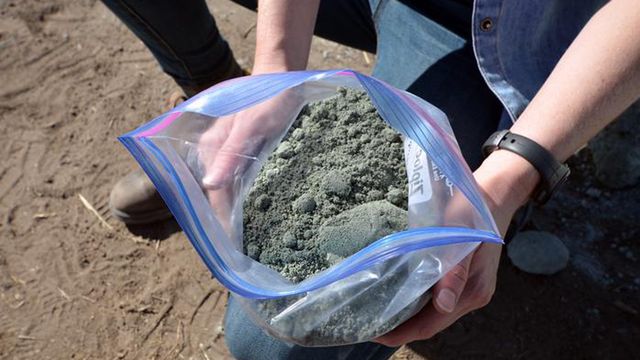Adding crushed volcanic rock to cropland could be a promising method for sequestering carbon and mitigating climate change.
In a recent field study conducted by scientists at the University of California, Davis, and Cornell University, it was found that adding crushed volcanic rock to cropland can store carbon in the soil, even in dry climates. The study, published in the journal Environmental Research Communications, demonstrated that the process of rock weathering can remove carbon dioxide from the air and lock it up in the soil.
Rock weathering is a natural process that occurs over millions of years, but by crushing the rock into a fine dust, the weathering process is accelerated. Previous studies have estimated that this “enhanced” rock weathering technique could potentially store 215 billion tons of carbon dioxide over the next 75 years if implemented on croplands worldwide.
The researchers applied crushed rock, specifically metabasalt and olivine, to a fallowed cornfield in California’s Sacramento Valley. Despite the extreme drought conditions in California at the time, the study found that the plots with crushed rock stored 0.15 tons of carbon dioxide per hectare, compared to plots without crushed rock.
While the study focused on a small-scale field test, the results are promising. If this amount of carbon removal could be achieved across all croplands in California, it would be equivalent to taking 350,000 cars off the road annually.
The findings of this study have important implications for carbon sequestration efforts, especially in dryland areas that are expanding due to climate change. With 41% of the Earth’s land surface covered by drylands, investigating enhanced rock weathering in these regions is becoming increasingly important.
However, the researchers acknowledge that further research is needed to measure and verify carbon storage at larger scales and over longer periods of time. Nonetheless, this study represents a critical step forward in understanding the potential of enhanced rock weathering as a method for removing carbon dioxide from the atmosphere and combating climate change.
In conclusion, the addition of crushed volcanic rock to cropland shows promise as a tool for sequestering carbon and mitigating climate change. Further research and field tests are needed to fully understand the effectiveness and scalability of this technique, but the initial results are encouraging.









